An Old History of Canadian Women Mountaineers
Historical moments from the turn of the 20th century to the early 1980s
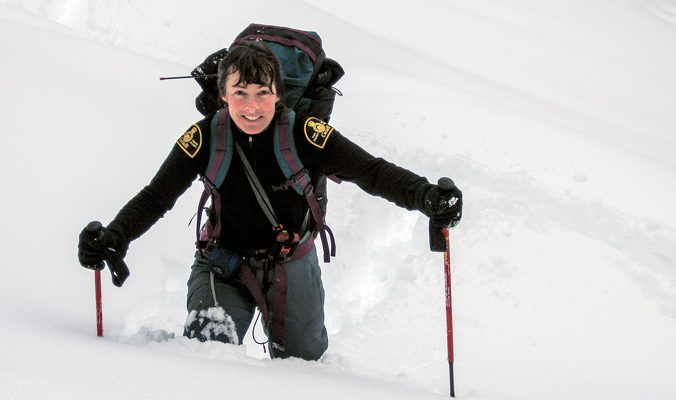
For over 100 years, Canadian women have been at the forefront of climbing across the country. In 1902, Elizabeth Parker was working at the Manitoba Free Press when American Alpine Club president, Charles Fay, proposed to establish a Canadian chapter of the American club. Parker wrote criticism of the idea and then helped to establish the Alpine Club of Canada (ACC) as an independent Canadian mountaineering organization. She continued to publicize and support Canadian mountaineering and helped organize the founding meeting of the ACC in 1906, at which she became the Club’s first secretary. While she was not a climber, Parker took part in many of the ACC camp trips.
She helped lay out the philosophical foundations of the club in the opening article of the first Canadian Alpine Journal (1907) and said the club was “a national trust for the defense of our mountain solitude against the intrusion of steam and electricity and all the vandalism of this luxurious utilitarian age; for the keeping free from the grind of commerce, the wooded passes and valleys and alplands of the wilderness. It is the people’s right to have primitive access to the remote places of safest retreat from the fever and the fret of the market place and the beaten tracks of life.” A hut in the Canadian Rockies is named in her honour.
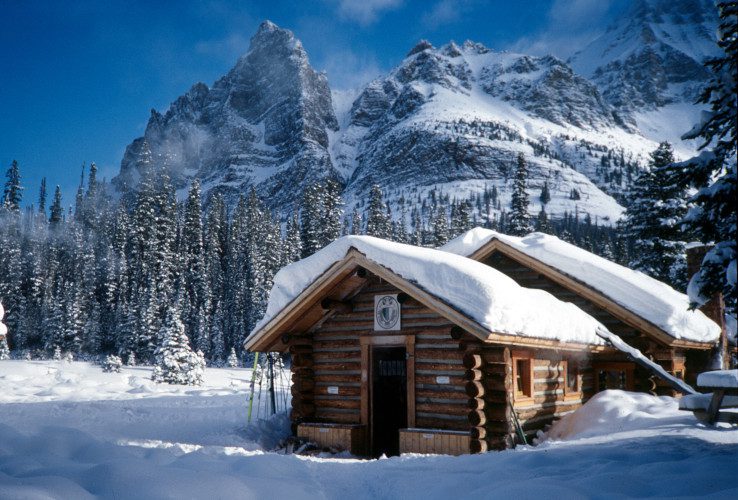
Phyllis Munday
In 1924, Phyllis Munday became the first woman to reach the summit of Mount Robson, the highest peak in the Canadian Rockies. She was known for outpacing her male counterparts and for carrying heavier loads. Conrad Kain was a member of the Robson climb and at the summit, he clasped Munday’s hands and said, “There, Lady! Here is the top of Mount Robson. You are the first woman on this peak – the highest of the Canadian Rocky Mountains.” In 1925, she and her husband, Don, discovered Mount Waddington. She spent the next 25 years exploring the Coast Mountains and making first ascents. In 1933, her and Don made the first ascent of Combatant Mountain, which is still considered a serious climb.

Esther Kafer and Louise Guy
Six decades ago, two women immigrated to Canada who would go on to become legendary mountain climbers. In 1958, Esther Kafer moved to Vancouver from Switzerland and started to climb in the Coast Mountains. She made the first ascent of the northwest summit of Mount Waddington with her husband Martin. She also made the first ascent of Mount Winstone, one of the hardest alpine routes in the Coast Mountains at the time. Esther climbed about 500 mountains around the world, including in South America, Africa, Asia, Europe, here.
For an engagement present, they bought each other a nylon mountaineering rope — nylon was new technology in those days. Then they climbed Mont Blanc and for their honeymoon, they climbed the Matterhorn. It was on that Matterhorn that Esther saved Martin’s life. He tumbled off a snow slope, and Esther, stopped self-arrested and saved them. “That rope was the tie that binds,” Martin said. In 2012, they became the oldest couple to summit Mount Kilimanjaro, Esther at 84 and Martin at 85.
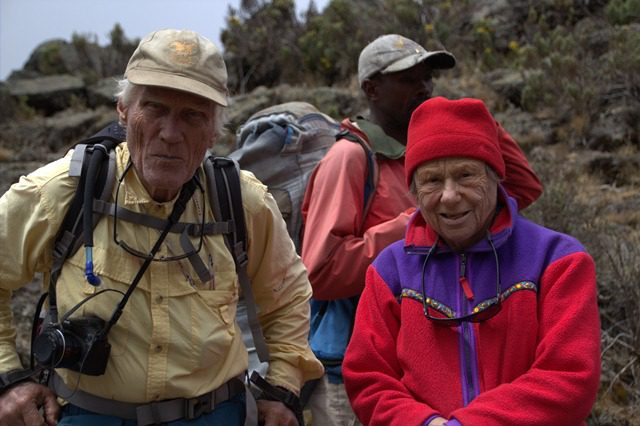
In 1965, Louise Guy immigrated to Canada with her husband Richard and settled in Calgary. They joined the Alpine Club of Canada and spent decades pursuing adventures in the Canadian Rockies.
They attended dozens of mountaineering and backcountry ski touring camps, including a ski adventure to Mount Logan when they were in their early 70s, camping on glaciers for ten days with Banff poet, Jon Whyte with Chic Scott as one of their guides. They were still skiing into the Alpine Club of Canada’s Bow Hut in their late 70s.
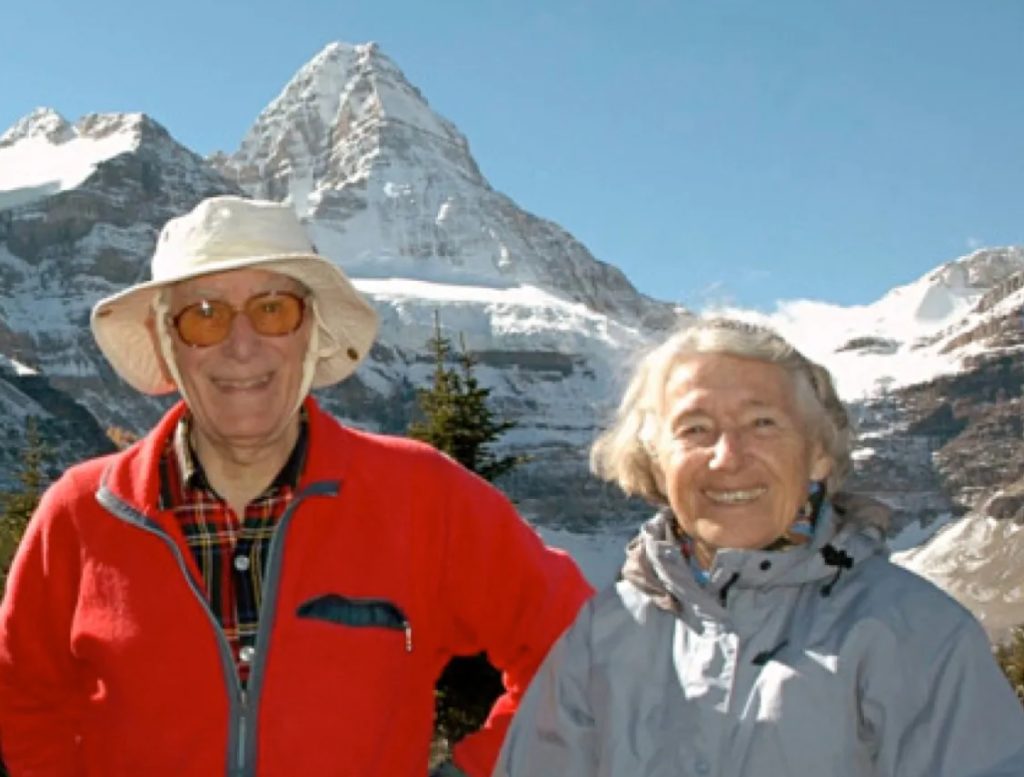
In his biography, Young at Heart: The Inspirational Lives of Richard and Louise Guy, Chic Scott quoted Richard: “I count myself as the luckiest person in the world. I was married to the best wife in the world for 70 years, and I was paid for doing what I like doing.”
In 2016, the Louise and Richard Guy Hut opened near Mont des Poilus high in Yoho National Park.
Alice Purdey
In the 1960s, Alice Purdey was one of Canada’s leading climbers. She made first ascents of many of Squamish routes, like Echelon, Colon and Triptoe. She was among a small group of climbers who were climbing technical rock routes in Canada at the time. She made an early ascent of Mount Waddington and first ascents in the Pantheon Range and around Hurley River. In 1967, she was part of a team that attempted the unclimbed north ridge of Mount Logan and she made the first Canadian ascent of Mount St. Elias. Read her amazing story about their attempt in the Canadian Alpine Journal here. (Note: Alice’s last name has been spelled as ‘Purdy’ and ‘Purdey’ in the Canadian Alpine Journal, but it is correctly spelled ‘Purdey’)
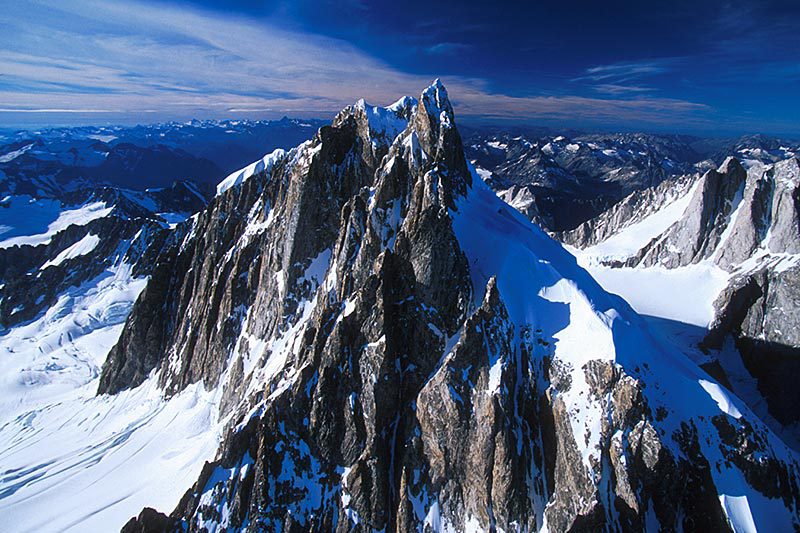
Mount Logan 1977
In 1977, an all-women’s team made an attempt on Mount Logan. The climbers included Cathy Langhill, Katherine Calvert, Judy Sterner, Loraine Drewes, Diana Knaak and Sharon Wood. In 1974, Calvert had become one of the first female national park wardens in Canada. Calvert wrote in the Canadian Alpine Journal, “The true peak rose above us perhaps 100 to 150 ft in a steep incline which fell directly to the Seward Glacier 12,000 ft below. Between the ridge dropped steeply to a secondary col. It was obvious we could not reach it that day without being forced to spend the night out. The decision to return was wordless. Though we hadn’t set foot on the actual peak we felt our own goad had been achieved. We had planned and executed the first all women’s expedition to Canada’s highest mountain and had accomplished it safely…”
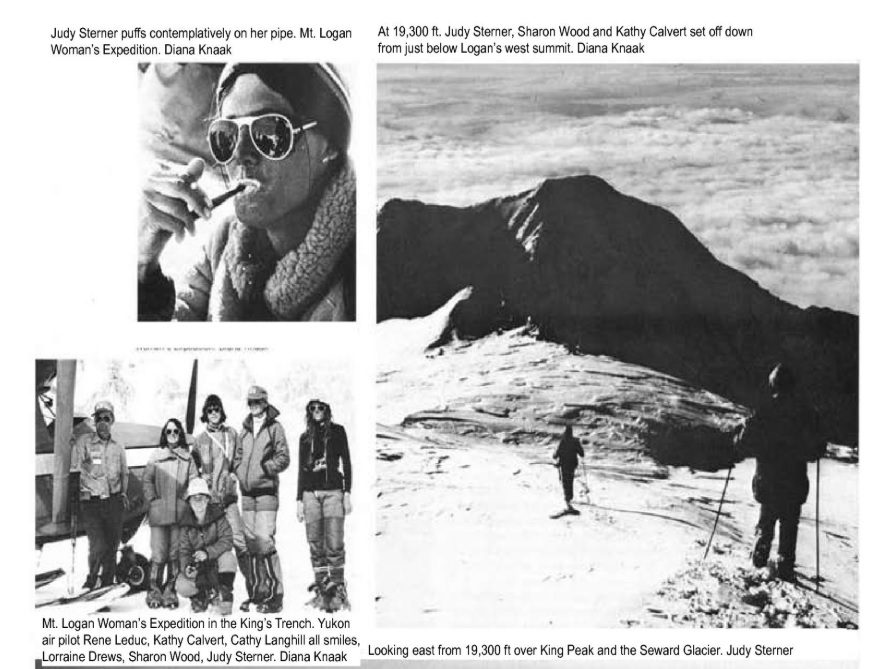
Sylvia Forest
In 1980, Sylvia Forest, 19, made an impressive ascent of Mount Cook in New Zealand. She climbed with one boot (a piece of shale strapped on and a stuff sack serving as her other shoe) up the Zurbriggen Ridge. The team ran out of food on the five-day climb through wet weather. Sylvia’s father, Don Forest, was a leading climber in the Canadian Rockies for decades. “My dad took it upon himself to get me out of my mom’s hair,” Sylvia said. She remembers skiing to the Wapta Icefield’s Bow Hut at 10 years old in -25°C, and, when she was too tired from her heavy pack, her dad pulled her along.
Forest went on to become a mountain guide with the Association of Canadian Mountain Guides, a park warden and mountain rescue specialist in Lake Louise, Jasper, and Glacier National Parks for over two decades and managed the mountain rescue program in Glacier Park. In 1993, she was on the first all-female ascent of the East Ridge of Mount Logan with Andrea Petzold, Leanne Allison and Mary Clayton.



